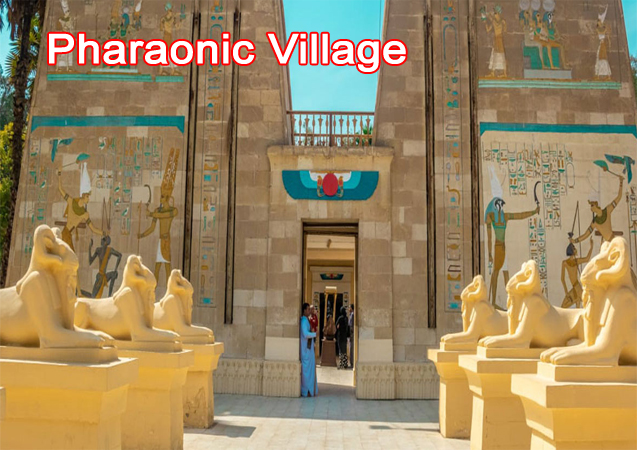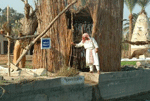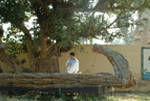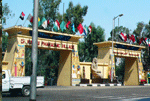Introduction to Pharaonic
Village
Pharaohs Village
Pharaonic Village
Pharaonic Village Cairo A Hands-On Journey into Ancient Egypt
The Pharaonic Village (also known as the Pharaohs Village or The Pharaonic Village) is a living-history attraction on Jacob Island near Giza. Visitors glide on a boat through engineered canals, watch re-created scenes of daily life and rituals, visit replica tombs and temples, and take part in hands-on workshops. Ideal for families, students and anyone wanting an immersive introduction to ancient Egyptian life.
Pharaonic Village
Pharaohs Village
The Pharaonic Village
Table of Contents
Pharaonic Village Overview
The Pharaonic Village was created to present ancient Egyptian civilization in a way that textbooks cannot: through movement, sound and lived detail. Instead of static artifacts behind glass, visitors experience reenactments people in period dress performing agricultural tasks, religious rites and artisan crafts while guides narrate historical context. The setting uses canals and a series of vignettes to give the impression of passing through different eras and social settings of pharaonic Egypt.
Why Visit the Pharaohs Village?
There are a few powerful reasons to include the Pharaohs Village on your Cairo itinerary:
- Immersion: Seeing actors recreate daily life transforms abstract facts into memorable scenes.
- Accessibility: Compared with full archaeological tours, the Village condenses centuries of history into a short, approachable experience.
- Family-friendly learning: Children and students often retain more from interactive experiences than from reading alone.
- Photographic & cinematic appeal: The recreated scenes, costumes and canals give excellent photo opportunities that feel cinematic yet authentic.
Main Scenes & Attractions in The Pharaonic Village
The site is organized into several signature scenes and exhibits, each designed to spotlight an aspect of ancient life:
- Nile Canal Boat Tour: The classic entrance: a boat ride that takes you past tableaux of farmers, fishermen, and riverside life evoking the Nile’s central role in Egyptian culture.
- Daily Life Reenactments: Scenes of pottery-making, weaving, basketry, and food preparation show how ordinary people sustained large civilizations.
- Religious Rituals & Temples: Actors perform ritual sequences and explain the roles of priests and gods—visitors see replicas of shrines and temple courtyards.
- Mummification Demonstrations & Replica Tombs: Educational walkthroughs explain funerary beliefs and the care taken to preserve bodies for the afterlife.
- Workshops & Hands-On Areas: Papyrus-making, hieroglyph painting, and costume dress-ups let visitors try ancient crafts themselves.
- Small Museum Halls: Curated displays with artifacts, facsimiles and explanatory panels deepen the contextual story.
Pharaonic Village
Pharaohs Village
The Pharaonic Village
Education, Workshops & Family Fun
One of the Pharaonic Village’s strengths is its educational design. Schools frequently bring groups for field trips because the site aligns well with curricula: children can see how a seed became food, how writing was used, and how religious life structured society. Workshops are intentionally short, hands-on and scaffolded by staff so that even small children can produce a papyrus sheet or paint a cartouche to take home.
Visitor Tips & Practical Information
Plan ahead to make the most of your visit:
- Timing: Morning visits avoid heat and crowds; late afternoon offers gentler light for photography.
- Duration: Expect about 90–150 minutes for the main boat tour and a quick look at exhibits; add time for workshops if you want hands-on experiences.
- Tickets & Packages: Basic admission typically includes the boat ride; combined tickets add workshops or small museum entries.
- Family considerations: The site is child-friendly but has uneven surfaces; bring sun protection and water during hot months.
- Language: Guides and narrations are often available in Arabic and English; audio guides or printed information may be offered in other languages.
Pharaonic Village
Pharaohs Village
The Pharaonic Village
How the Pharaonic Village Combines with Nearby Sights
The Pharaonic Village is conveniently close to major Giza attractions, so you can combine it with other experiences. Many visitors pair the Village with a short trip to the
Great Sphinx of Giza or a stroll along the Nile Corniche. For a modern contrast, a visit to the
Cairo Tower gives panoramic views that complement the close-up, human-scale history you see at the Village.
Conclusion & External Reference
The Pharaonic Village offers a rare blend of entertainment and education: it turns abstract chronology into living scenes, and passive learning into active exploration. Whether you call it Pharaonic Village, Pharaohs Village or The Pharaonic Village, the attraction remains a powerful introduction to the rhythms of ancient Egyptian life. For further reading, consult this overview:
The Pharaonic Village Wikipedia.
Frequently Asked Questions
What is included in a standard ticket?
Standard tickets usually include the canal boat tour and access to the main outdoor scenes. Workshops, special exhibits and guided tours may require additional fees.
How family-friendly is the Pharaonic Village?
Very family-friendly: children enjoy the interactive activities and costumed performances; teachers often organize school trips here for experiential learning.
Can visitors take photographs and video?
Photography is generally allowed for personal use; some indoor exhibits may restrict flash or tripods check onsite signage.
Is the Pharaonic Village historically accurate?
The Village aims for archaeological plausibility costumes, tools and scenes are based on research but its primary goal is interpretation and education rather than museum-level authentication of every minor detail.
|




